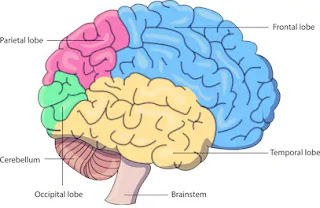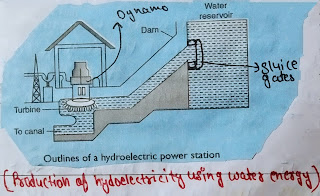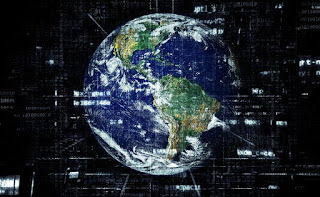Cbse notes class-10th chapter-Political Parties
Cbse Social Science Notes class-10
Chapter-4 Political Parties(Political science)
Political Parties-An Introduction
(1)what is a Political Parties?
→A political party is a group of people who come together to contest elections and hold power in the government.
→It mobilises voters to support common sets of interest, Concerns and goals.
→A political party fixes the political agenda and policies and tries to persuade people by claiming why their policies are better than those of other parties.
→A political party is the means through which people can speak to the government and have a say in the governance of any country.
→A political party has three Components:(i)the leaders(ii)the active members , and(iii)the followers.
(2)Functions
→Parties contest elections by putting up candidates.
→In some countries, candidates are selected by members and supporters of a party(eg. USA).
→In other countries , candidates are chosen by top party leaders -eg., India.
→Parties have different policies and programmes , voters choose from them.In a democracy, a large number of people with similar opinion group together and form a party and then give a direction to the policies followed by the government.
→The parties that lose elections form the opposition and voice different views and criticize govt for their failure.They Mobilise opposition to the govt.
→They shape public opinion.Parties with the help of pressure groups launch movements for solving problems faced by the people.
→They provide people access to government machinery and welfare schemes.The local party leader acts as a link between the citizen and the government officer.
(3)Need for Political Parties
→The democracies can not exist without political parties is clear from the functions they perform.
→If there were no political parties then:
•All candidates in an election would become independent candidates.They can not promise any major policy charge to the people.No one will be responsible for how the country is run.
•In large societies , only representative democracy can work .Political parties become an agency to gather different views on various issues and present them to the government.
Party system
There are three types of party systems:
(i)One -Party system(ii)Two-Party system(iii)Multi-Party System.
(i)One-Party system:These is no competition in this system .The alone party nominates the candidates and the voters have only two choice -(i)Not to vote at all or(ii)write'yes'or'no' against the name of the candidates nominated by the party.This system has been popular in Communist countries and other authoritarian regimes e.g.;china ,north korea and Cuba.This system was also prevalent in USSR till Communism collapsed.
(ii)Two -Party system:
Power shifts between two major,dominant parties .In this system ,to win elections,the winner has to get maximum number of votes,but not necessarily a majority of votes.The smaller parties usually merge with the bigger parties or they drop out of elections.This parliamentary system prevails in great britain and Canada,in which only two parties hold significant numbers of seats.Supporters of this system believe that this prevents dangers of fragmentation (too many parties winning seats from different constituencies)and the government can run smoothly.
(iii)Multi-Party system:It is the most common type of party system.In this system,three or more parties have the capacity to gain control of the government separate or in coalition.when no party gains a majority of the legislative seats in multi-Party parliamentary system,then several parties join forces and form a coalition government.Supporters of this system point out that it alllows more points of views to be represented in the government.Critics of this system point out that multi-party system sometimes leads to political instability.
National and Regional Parties
→An Alliance
When several parties in a multi-party system join hands for the purpose of contesting election and winning power ,it is called an alliance or a front .India ,in 2004 and 2009,had three such alliances for parliamentary elections:(i)National democratic Alliance (ii)The united Progressive Alliance and (iii)Left front.
→Proportion of Participation
Level of participation in the activities of the parties-Very high in india.-Advanced countries like Canada,japan,spain and south korea much less.-People in india who feel close to a political party-Membership of political parties has also gone up.
→Election Commission
Every party in india has to register with the election Commission.The Commission treats every party as equal to the others ,but it offers special facilities to large and established parties.
They are given a unique symbol and are called,"Recognised Political parties."
Introduction to major Political Parties in india:
(1)Indian National Congress(INC)
(2)Bhartiya Janata Party(BJP)
(3)Bahujan samaj Party(BSP)
(4)Communist Party of india-marxist(CPI-M)
(5)Communist Party of india(CPI)
(6)National Congress Party (NCP)
→State or Regional Political Parties:
●Regional parties need not be regional in their ideology or outlook.Some of these parties are all india parties that happen to have succeeded only in some states.
●Parties like the samajwadi Party,samata Party and Rashtriya janata Dal have national level poltical
Organisation with units in several states.
●Some of these parties like biju Janata Dal ,sikkim democratic Front and Mizo National front are conscious about their state identity.
Challenges Faced by Political Parties and Its Reforms
(1)Lack of internal democracy within parties
→Power concentrated in the hands of few.
→No organisational meetings.No keeping of membership register.
→No internal ,regular elections.
→Ordinary members do not have access to information,cannot influence decisions.
→Disagreement with the leader leads to ouster from the party.
(2)Dynastic succession
→leaders on top have unfair advantage to favour people close to them or family members.
→Top position controlled by family members in most parties .
→Bad for democracy
→Tendency seen all over the world,even in the older democracies .
(3)Money and muscle Power
→During elections this power is very visible.
→Candidates who can raise money are nominated.
→Rich people and companies who give funds have influence on policies.
(4)Parties do not offer a meaningful choice to the voters.
There is not much difference in ideology among parties.Example :The labour Party and Conservative Party of Britain only differ on details of implementation rather than fundamental principales.
→In india too there is not much difference among parties on economic issues.
Reforms:
As political parties face these challenges ,there is a growing need to reform the system.Some of the reform measures taken by the government are:Anti -defection law, affidavit requirement and organisational meetings for political parties.
Some suggestions made to reform political and its leaders:
1.A law should be made to regulate the internal affairs of political parties.It should be made compulsory for political parties to maintain a register of its members,follow its own constitution and hold open election to the highest posts.
2.It should be made mandatory for political parties to give a minimum number of tickets,about one-third ,to women candidates.
3.There should be state funding of elections.The government should give parties money,petrol,paper, telephone etc.to support their election expenses









Comments
Post a Comment
Use the respectfully words in comment box.